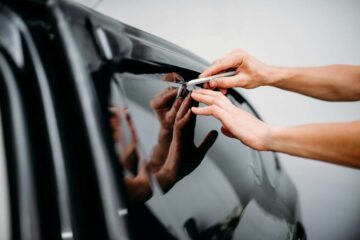Control Arm Bushing Noise: How to Identify and Fix Annoying Suspension Creaks

An automobile’s suspension system relies heavily on its control arm bushings. They enable smooth and controlled movement by attaching the control arms to the vehicle’s structure. These bushings may deteriorate or wear down with time, producing noises and creaks that may detract from the pleasure of driving. Maintaining the comfort and safety of your car depends on knowing what’s causing this noise and how to solve it.
Recognizing the Noise
A creaking or groaning sound is frequently produced by worn-out control arm bushings, particularly while the vehicle is braking, turning bends, or bumping over obstacles. These noises are frequently more particular to the control arm bushings, but drivers may initially confuse them for general suspension problems. A careful visual examination of the suspension parts may show cracks, looseness, or excessive wear in the bushings, and a test drive on an uneven road can assist isolate the noise.
Causes of Control Arm Bushing Noise
Wear and tear from extended use is usually the cause of control arm bushing noise. Rubber or polyurethane bushings deteriorate with time as a result of exposure to heat, moisture, and road debris. They become less flexible as a result of this deterioration, which makes it harder for them to adequately cushion and absorb shocks. The distinctive cracking sound might also be caused by dry or broken bushings creating friction against the metal parts they support.
Dealing with the Issue
Lubricating the bushings or replacing them completely are common solutions for control arm bushing noise. Especially if the bushings are not badly worn, lubrication may be a short-term fix. However, a more dependable and long-term solution is to replace the bushings. Although they may transmit a little more vibration to the car’s interior, polyurethane bushings are a common replacement since they are more resilient than rubber ones. You can hire the Auto Repair in Lynden, WA for dealing with such issues.
Since replacing a bushing may call for certain equipment and suspension system knowledge, it is best to have a qualified mechanic do the work. Uneven tire wear and impaired handling are two further issues that can result from misaligned or incorrectly placed bushings.
Stopping Future Noise
It is essential to do routine maintenance in order to eliminate control arm bushing noise. When normal checks are performed, such as when the oil is changed or the tires are rotated, early wear indications can be discovered. Lubricants or oil should be applied to the bushings on a regular basis in order to help them last longer and reduce the amount of noise they produce. Some other precautions that can be taken to extend the lifespan of the suspension system include avoiding driving in an aggressive manner and maintaining the correct alignment.
Conclusion
By addressing the noise coming from the control arm bushing as soon as possible, you may prevent further damage to the suspension, improve the performance of your vehicle, and make driving more comfortable.










